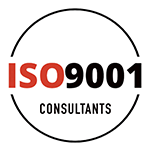Getting ISO 9001 certified may seem like a daunting task, but it doesn’t have to be. Knowing the right steps can make the process much easier. ISO 9001 is a standard for quality management systems that many businesses around the world follow. Achieving ISO 9001 certification shows that your business is committed to quality and continuous improvement.
By following these steps carefully, you can achieve ISO 9001 certification smoothly and efficiently. This certification can bring many benefits to your business, such as improved processes and greater customer satisfaction.
Understanding ISO 9001 Requirements
Understanding ISO 9001 requirements is the first step towards certification. The ISO 9001 standard outlines what a quality management system should include. It focuses on meeting customer needs and improving overall efficiency.
One of the main requirements is having a quality policy. This policy should state your business’s commitment to quality and continuous improvement. It needs to be communicated to all employees so everyone understands their role in maintaining high standards.
Another requirement is documenting processes. ISO 9001 requires you to have clear documentation for all your key processes. This helps ensure that everyone follows the same procedures, reducing errors and improving consistency. Documentation also makes it easier to train new employees and track any changes to the processes.
You also need to set measurable quality objectives. These objectives should align with your quality policy and help you track your progress. Regularly reviewing these objectives helps you stay focused on improving your quality management system.
Preparing Your Quality Management System
Preparing your quality management system (QMS) is a crucial step towards ISO 9001 certification. Here’s how to get started:
1. Assess Your Current System:
Begin by assessing your current quality management practices. Identify any gaps or areas that need improvement to meet ISO 9001 standards.
2. Create a Project Plan:
Develop a plan that outlines the steps needed to update your QMS. This plan should include timelines, resources, and responsibilities for each task.
3. Document Key Processes:
Ensure that all key processes are well-documented. This includes procedures for production, quality control, and customer service. Clear documentation helps maintain consistency and quality.
4. Train Your Staff:
Provide training for your employees on the new QMS and ISO 9001 requirements. This ensures that everyone understands the changes and their role in maintaining quality.
5. Implement Changes:
Make necessary changes to your current practices to align with ISO 9001 standards. This may involve updating processes, improving documentation, and enhancing quality checks.
6. Monitor and Review:
Regularly monitor your updated QMS to ensure it is effective. Review and adjust as needed to improve your quality management practices continuously.
By following these steps, you can prepare a robust quality management system that meets ISO 9001 requirements and sets the stage for successful certification.
Conducting Internal Audits
Conducting internal audits is a vital part of the ISO 9001 certification process. These audits help ensure that your quality management system (QMS) is effective and meets the required standards. Internal audits are also a great way to identify areas for improvement.
Start by appointing an internal audit team. This team should include employees who understand the processes but are not directly involved in them. This helps ensure objectivity during the audit.
Next, develop an audit plan. This plan should outline the scope of the audit, including which processes will be reviewed and the timeline for completing the audit. Having a clear plan helps keep the audit organised and focused.
During the audit, the team will review documentation, observe processes, and interview employees. They will look for any gaps or non-conformities in the QMS. It’s important to record all findings and discuss them with the relevant departments.
After the audit, the team should prepare a report summarising their findings. This report should include any non-conformities and recommendations for improvement. Use this report to make necessary changes to your QMS before the external audit.
Passing the External Audit for Certification
Passing the external audit is the final step in getting ISO 9001 certified. An external auditor will evaluate your QMS to see if it meets the ISO 9001 standards. Here are some tips to help you pass:
1. Choose a Certification Body:
Select a recognised certification body to conduct the external audit. Ensure they are accredited and have experience in your industry.
2. Schedule the Audit:
Arrange a convenient time for the audit. Make sure all key employees are available during this period.
3. Review Documentation:
Ensure all QMS documentation is up-to-date and accessible. The auditor will review these documents to verify compliance with ISO 9001 standards.
4. Prepare Your Team:
Inform your employees about the upcoming audit. Provide any necessary training and address any last-minute questions or concerns.
5. Address Previous Findings:
If you had any non-conformities from the internal audit, make sure they have been addressed and corrected.
6. Conduct a Pre-Audit Check:
Perform a final check of your QMS to ensure everything is in place. This can help identify any last-minute issues that need fixing.
During the external audit, the auditor will follow a process similar to that of internal audits. They will review documents, observe processes, and interview employees. Be cooperative and provide any information they request promptly.
Conclusion
Achieving ISO 9001 certification doesn’t have to be a difficult process. By understanding the requirements, preparing your quality management system, and conducting thorough internal audits, you set yourself up for success. Passing the external audit signifies that your business meets global quality standards, which can open up new opportunities and improve customer satisfaction.
If you’re ready to take the next step towards ISO 9001 certification, consider enlisting professional help. Contact ISO 9001 Consultants today to guide you through the certification process and ensure your business meets all the necessary standards. Get started on your journey to better quality and greater success.








Users Comments
Get a
Quote